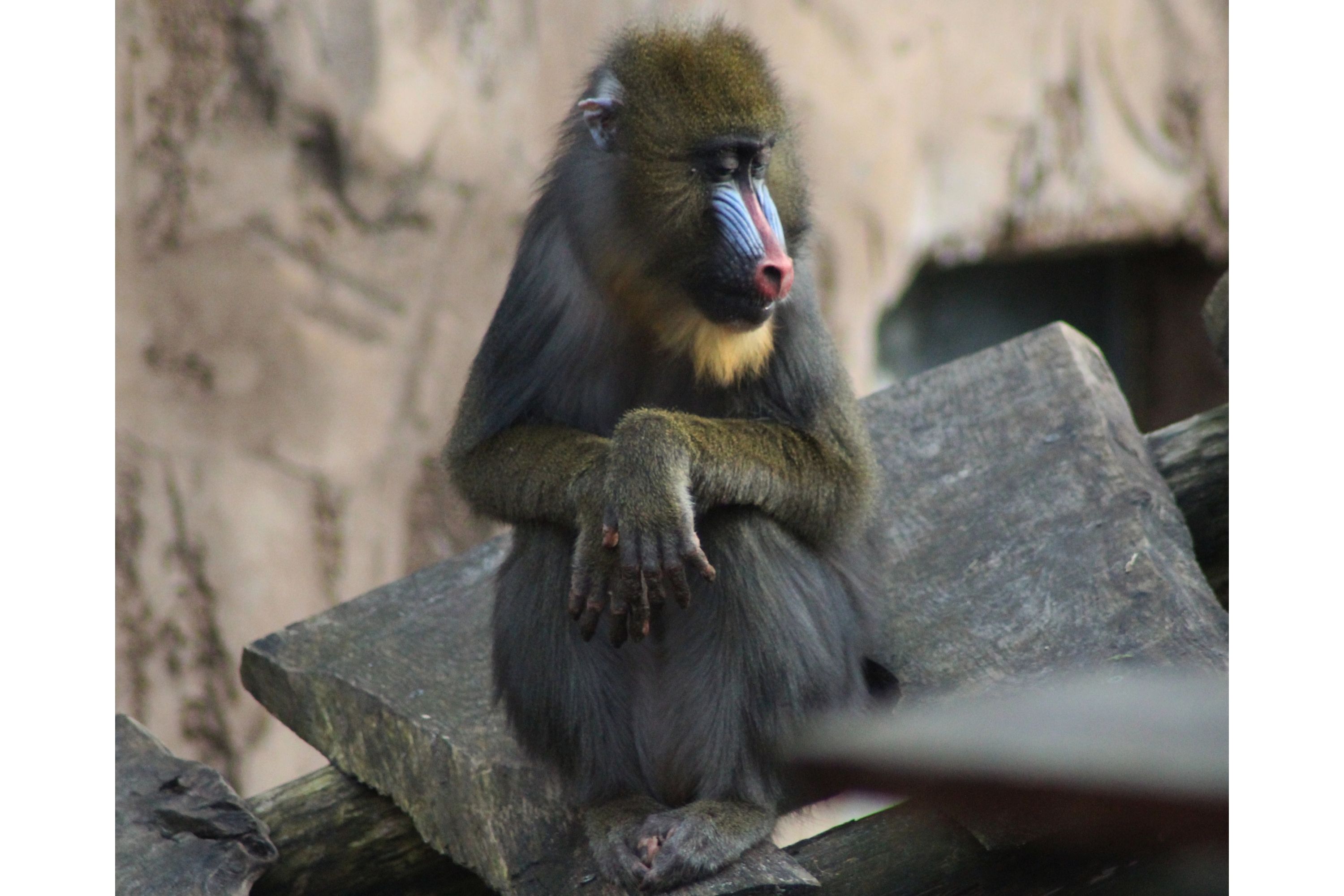Mandrill
(Mandrillus sphinx)

Description
The mandrill (Mandrillus sphinx) is a large Old World monkey native to west-central Africa. It is one of the most colorful mammals in the world, with red and blue skin on its face and posterior. The species is sexually dimorphic, as males have a larger body, longer canine teeth and brighter coloring. Its closest living relative is the drill with which it shares the genus name Mandrillus. Both species were traditionally thought to be baboons, but further evidence has shown that they are more closely related to white-eyelid mangabeys. Mandrills mainly live in tropical rainforests but will also travel across savannas. They are active during the day and spend most of their time on the ground. Their preferred foods are fruit and seeds, but mandrills will consume leaves, piths, mushrooms, and animals from insects to juvenile antelope. Mandrills live in large, stable groups known as "hordes" which can number in the hundreds. Females form the core of these groups, while adult males are solitary and only reunite with the larger groups during the breeding season. Dominant males have more vibrant colors and fatter flanks and rumps, and have more success siring young. The mandrill is classified as vulnerable on the IUCN Red List. Its biggest threats are habitat destruction and hunting for bushmeat. Gabon is considered the stronghold for the species. Its habitat has declined in Cameroon and Equatorial Guinea, while its range in the Republic of the Congo is limited. The word "mandrill" is derived from the English words "man" and "drill" the latter meaning "baboon" or "ape" and being West African in origin and dated to 1744. The name appears to have originally referred to chimpanzees. The first scholar to record the name for the colorful monkey was French naturalist Georges-Louis Buffon in 1766. It was called the "tufted ape", "great baboon" and "ribbernosed baboon" by Welsh naturalist Thomas Pennant in A Synopsis of Quadrupeds (1771) and A History of Quadrupeds (1781). The mandrill was first scientifically depicted in Historia animalium (1551-1558) by Swiss naturalist Conrad Gessner, who considered it a kind of hyena. The species was formally classified by Carl Linnaeus as Simia sphinx in 1758. Its current generic name Mandrillus was coined by German naturalist Ferdinand Ritgen in 1824.
Taxonomic tree:







